Everything Dinosaur Reviews the Schleich Anhanguera Pterosaur Model
This is a review of the new Schleich Anhanguera pterosaur model and what a wonderful flying reptile model it is too.
Anhanguera is a member of the Ornithocheiridae family of pterosaurs, a group of flying reptiles that seem particularly well-adapted to long-distance soaring. Most of the fossils of ornithocheirids are associated with marine environments and their fossils have been found on every continent with the exception of Antarctica.
New For 2015 The Schleich Anhanguera Pterosaur Model
Picture credit: Everything Dinosaur
Anhanguera
Anhanguera is very typical of the family and a number of species are known. The most complete Anhanguera fossils have been found in Brazil in the famous Santana Formation of Lower Cretaceous strata. Although, fragmentary flying reptiles ascribed to Anhanguera have also been found in England.
The English fossil material comes mostly from the Cambridge Greensand Formation, and consists of just scraps, very worn segments, usually more robust parts of the skeleton such as the jaw tips. These are the fossilised remains of pterosaurs that died far out to sea. Skeletons were broken up by scavengers and wave action before coming to rest on the seabed, to get further scavenged and disassociated. These remains were gradually buried and preserved as fossils only for them to be eroded out of these rocks by ancient storms and re-deposited in what are much younger sedimentary rocks.
Brazilian Fossils Improve Our Understanding
It is thanks to the Brazilian fossil material that we have such a good understanding of Anhanguera and this Schleich replica does rather a good job of depicting what this flying reptile probably looked like.
The head and the jaws are very large and the forelimbs are proportionately much bigger and more robust than the hind limbs. The neck is thick, indicating that this a strong and muscular part of the body and evidence of a tufty, hair-like integumental covering of pycnofibres, the fuzzy coat of the Pterosauria, has been skilfully recreated in the model.
The wings are very stiff and help the Schleich Anhanguera to stand in what is probably not a very realistic pose, the hands were in all likelihood rested on the ground with the wing finger elevated, not pointed down, but this posture is a compromise between allowing the model to stand unaided and a flying position.
To view Everything Dinosaur’s World of History (Schleich) model range: Schleich World of History Models.
Schleich Anhanguera Replica
The elongated fourth wing finger tended to support a much bigger portion of the actual wing, about 60% of the entire wing length. The wings of Anhanguera were longer than seen in this replica and they were more elegant. Wingspans of around four to five metres are associated with the larger species in the Anhanguera genus. This was a wonderfully efficient long distance flyer, soaring on thermal currents that carried it effortlessly over the early Atlantic Ocean. Think of Anhanguera as a Early Cretaceous equivalent of today’s Albatross or Frigate Bird.
The design team at Schleich have done a particularly good job with the skull and jaws. It is very well painted and you have those two crests on the jaw tips, one on the upper jaw and a slightly smaller one on the bottom jaw. It is the size and shape of the crests that help scientists to determine different types of ornithocheirid. We are really impressed with the modelling and painting around the eyes and the nostrils are well defined as well as being clearly visible.
The Beautiful Schleich Anhanguera Replica
How Anhanguera Fed
How Anhanguera fed nobody knows. Perhaps it was a skim feeder, flying along with its beak in the water to catch fish at the surface, with those crests on the jaws helping acting as stabilisers. Maybe it floated and seized fish swimming just below the surface, or perhaps it plunged into the water and pursued fish in a way similar to today’s Gannets and Shearwaters, no one really knows, what is certain, is that this is an excellent pterosaur replica and a welcome addition to the Schleich model range.
To read an Everything Dinosaur blog post from 2011 on research into the Ornithocheiridae: Getting to Grips with a Pterosaur Family.


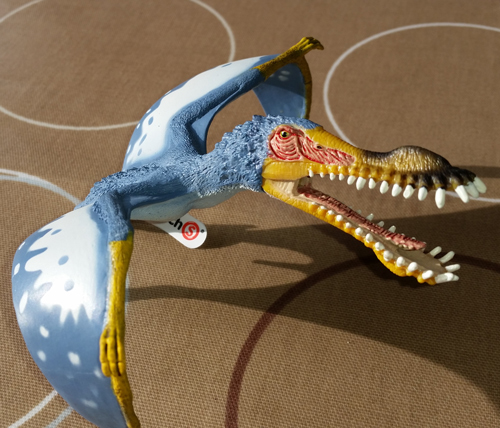
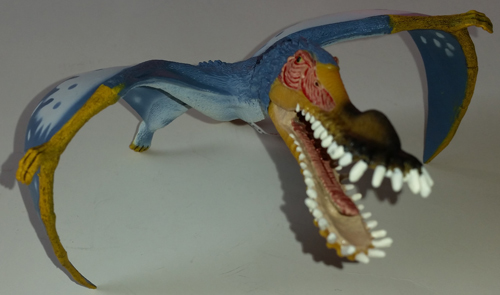
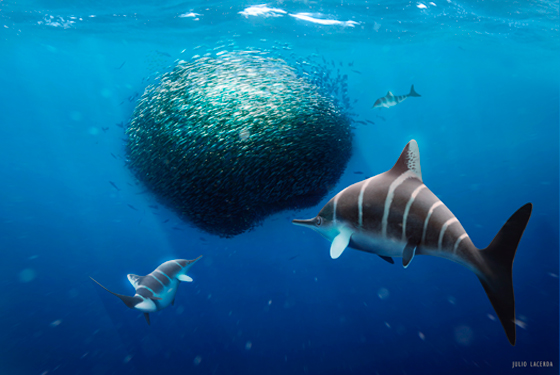

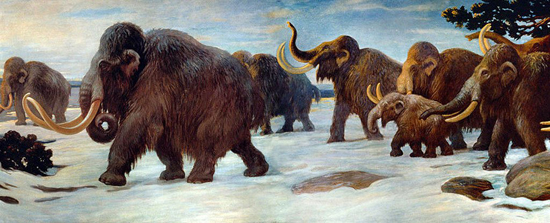
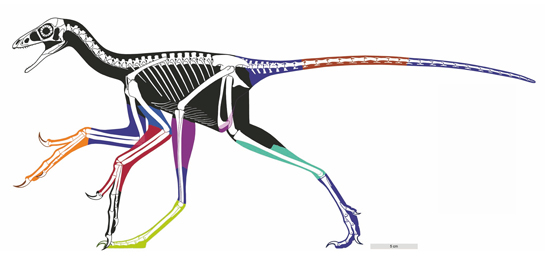
Thank you for helping ID my Model. I think it is a copy, an overrun from the Schleichfactory in China. Looks identical.